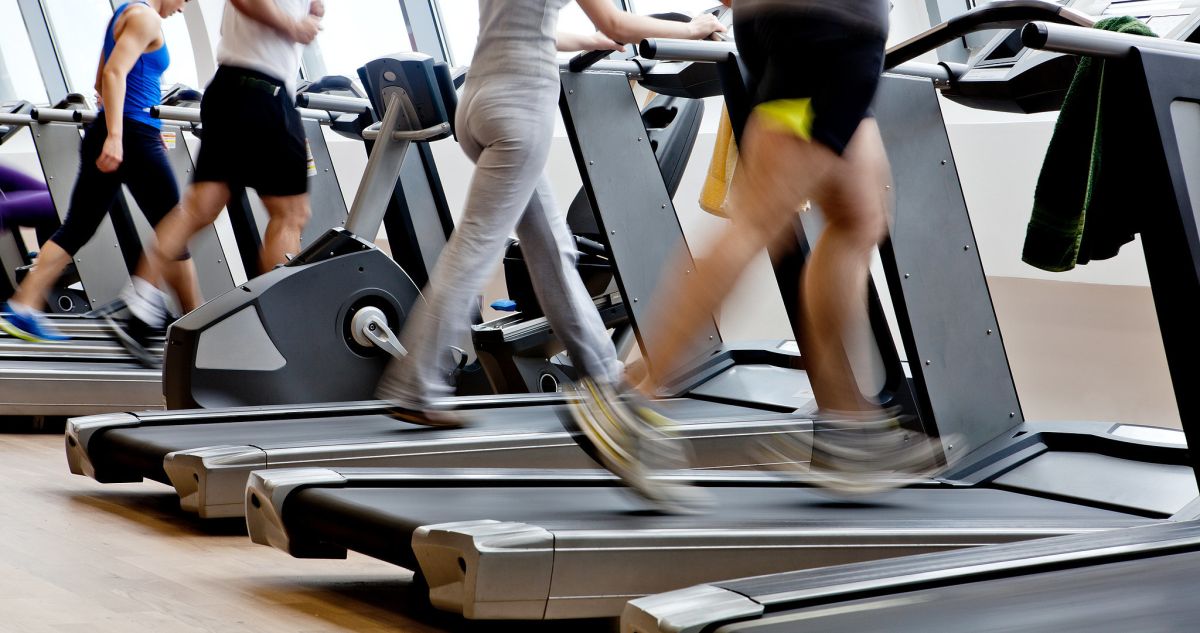Cardio is primarily aimed at training the heart muscle. This is an important part of bodybuilding because many neglect these workouts. And they are very important for the health of the cardiovascular system. In this article, we will consider the main myths and give recommendations for this type of training.
Cardio training includes: running, walking, jumping, cycling.
Features of cardio
Cardio is becoming more popular lately. Sometimes, when hitting the gym during rush hour, it can be difficult to get to the free treadmill or stationary bike. Many coaches claim that some guests, exercising on their own, are only wasting time and energy, and sometimes they can even act to their detriment.
How to get the most out of exercising on cardiovascular equipment and what to consider when training time?
You need to understand that cardio training is not aimed at muscle development, but at the cardiovascular system. Cardio training can only be beneficial if a person exercises correctly and regularly pulse . Failure to do so could cause serious harm to your health.
Preparation
Before doing cardio workouts, be sure to check your heart rate limits : top and bottom rung. The most accurate way to do this is to undergo a computer examination, which will show the state of the cardiovascular system and give an idea of the permissible blood pressure during exercise. To find out the upper and lower limits of the heart rate without a computer, you need to subtract age from 220. If the resulting number is multiplied by 65%, we get the lower permissible limit, and multiplying by 85% – the upper one.
Almost all types of modern simulators are equipped with a sensor that determines the pulse, professionals advise to use additional equipment as well. In order for the simulator to determine an accurate heart rate during training on a treadmill, the athlete’s palms must lie motionless on the handrails, which, in fact, is extremely difficult to do.

Five myths about cardio
“Cardio burns off fat better than barbells.
The shortest path to a slim figure is a combination of aerobic exercise and strength exercise. Some women mistakenly do just cardio for two reasons.
First , it is believed that aerobic exercise as an energy fuel, they say, directly uses fat, and strength exercises – only blood sugar and glycogen (sugar “stored” for future use in the liver).
Second: in 45 minutes of training aerobic exercise “burns” far more calories than equal strength training.
Yes, true – aerobics uses subcutaneous fat as fuel , but sa har blood and glycogen also go into action! Science has proven that during the first 20 minutes of aerobic exercise, only blood sugar and glycogen are consumed . And only then does the “burning” of fat begin.
Aerobics “burns” more calories for an equal training session . However, there is another truth: strength training significantly raises your metabolic rate at rest. For those who do not understand: at rest, our body gradually “burns” our fat to provide energy for the physiological work of our body (heartbeat, digestion, breathing, etc.). Strength training dramatically increases the rate of fat consumption at rest, the consumption itself depends on your muscle mass. For example, ten kg of muscle requires 500-900 additional calories per day, which is equivalent to one day of complete fasting per week!
Bottom Line: Cardio “burns” fat during exercise, but hardly affects fat loss during rest. Strength training is not so good at “burning” fat, but it seriously spurs the resting metabolism.
Doing both will greatly speed up your weight loss.
“The more aerobics, the better”
Scientists have found that although aerobics “burns” fat, after an hour of exertion, the body switches to muscle tissue. And instead of fat, protein amino acids burn in the fire of metabolism. After two hours of cardio training, the body loses up to 90% of leucine, an amino acid that determines muscle growth. Jay Cutler says: “In an effort to get to ‘relief’, I decided to push on aerobics and lengthened aerobic training to one and a half hours. Immediately the strength of the muscles dropped, and they lost their usual elasticity. Since then, I have been doing aerobics no longer than 45-50 minutes. ”
“ Start with cardio training , and then move on to strength exercises ”
Everything is the other way around. For strength exercises to work, you need to use heavy weights with which you can do no more than 6-12 reps per set. Starting with cardio will use up glycogen, which will lead to a drop in muscle strength. As a result, you will not be able to develop the intensity of training that involves muscle growth. You should start with the “iron”, and it will greatly help your aerobics. Strength training will deplete carbohydrate stores and therefore “fat burning” will not begin in a quarter of an hour, but almost immediately after the start of aerobic training.
The fourth myth
“Did you eat a cake? Nonsense, added twenty minutes of cardio, and the extra calories are gone! ”
If you start to overeat, then you will have to lengthen the duration of aerobic training beyond a reasonable time. As a result, this will lead to overtraining, and nothing more. The correct thing to do is to increase the intensity, not the duration of aerobics in the next two workouts. Then you need to return to the usual level of intensity. The best thing to do, however, is to subtract the excess calories eaten from your next meal.
“Increasing cardio and strength training with light weights will help you burn fat more efficiently.”
It has already been said that the best result in “burning” fat comes from a combination of aerobic and strength training. In the case of “iron” the load of the load is different. Low weights do not stimulate the growth of muscle tissue, but its amount, as you know, is a fundamental factor in “fat burning”. So, the main rule remains indisputable: you need a full-fledged strength training with large weights (6-12 repetitions per set).

Answer to frequently asked questions
- How long do you need to study?
Experts advise: at least 30 minutes three to five days a week . But we are all busy people and we cannot always find these 30 minutes in our schedule. Especially when we are working and want to spend more time with our family. Therefore, you can combine cardio with work . For example, when leaving work and you need to go down or up a multi-storey building, use your own feet and steps instead of the elevator.
- Which workouts are better for losing weight: running, walking, cycling?
Each of these types of loads will have their own pros. It all depends on what you enjoy. This factor is key when choosing a type of cardio training, thanks to it you will both lose weight and not physically deplete.
- When to do aerobics to lose weight faster?
We recommend doing 2-3 times a week traditional cardio training in moderate pace for 45-60 minutes, and two more times – interval training . You need to do strength exercises at least 2-3 times.
- What exercise regimen will help you keep the weight off?
To prevent pounds from returning, it is enough to train 3-4 times a week for 45-60 minutes at a moderate pace . Maintain your heart rate at 65-70% of your maximum. Practice interval training only in order of variety.
- Which is the most effective machine?
The one you like! Weight loss determines the amount of time you have been in aerobic workout. The more there are, the greater the weight loss. Your favorite machine will last longer than the one you hate.
Professional cardio tips
- Cardio training is beneficial if the person is exercising correctly , that is, you need to monitor the pulse.
- During training, should be constantly monitor your heart rate . For this reason, many advise using additional equipment during training, especially for those who have a tendency to high blood pressure or problems with the cardiovascular system.
- Before training, you need to determine your goal: active heart workout or weight loss. In the first case, the workout should be more intense (heart rate at 85% of the maximum upper mark), but shorter in time (on average 15–20 minutes. If you have a task to lose weight, then you need to prepare for a workout of 40–60 minutes, but with a lower intensity – 65% of the upper limit of the pulse.
- It is best to start with 10-15 minute sessions with a low intensity.
- When when choosing the time of day for cardio training, it is worth remembering that the degree of load in the morning and evening is different . In the morning, the intensity of the exercise should be lower – about 100-110 beats per minute for beginners, and 120-125 beats for regular visitors to the gym, while the evening workout should be more intense, with a heart rate of 130 beats for beginners and 140 beats for advanced ones.
- Only a gradual increase in the load and intensity of training loads can provide safe and effective e classes. If you follow it, then after a month with the same mode of training, the pulse rate will be much less frequent, which means that it will be possible to increase the degree of load. To move to a new level of intensity, you can use the so-called “verbal” test: during training, a person must be able to talk calmly. And then, the professionals point out, you can gradually increase the load.

